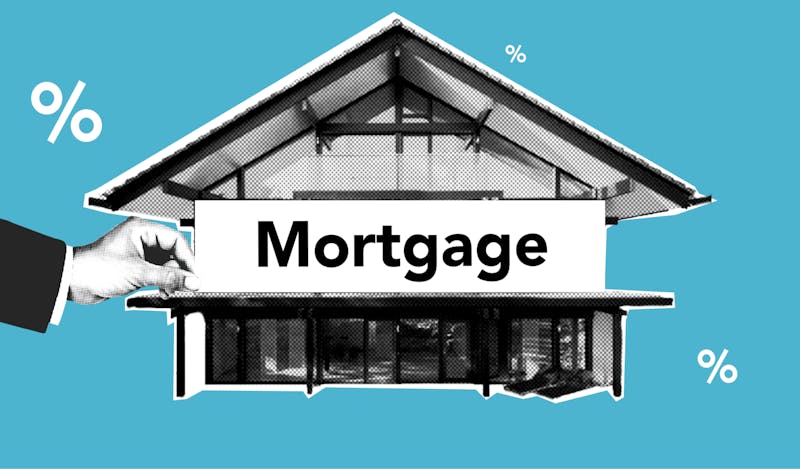Navigating the world of residential mortgages may be a difficult and often stressful affair, especially for individuals new to the home market. This thorough tutorial is intended to demystify residential mortgages for Canadian homebuyers. From the fundamentals of obtaining a house loan to the subtleties of various mortgage alternatives, we hope to give helpful insights and advice to assist you in comfortably navigating your home-buying process.
Tips for First-Time Homebuyers
Becoming a homeowner is a significant accomplishment. Here are some recommendations particularly designed for first-time homebuyers:
- Begin with Mortgage Pre-approval: Before you begin looking for a home, you must first determine how much you can borrow. The mortgage pre-approval process will provide you with a detailed overview of your financial situation and borrowing ability. This stage also helps you become a more appealing buyer to sellers since it demonstrates that you have genuine intent and the financial resources to follow through on your offer.
- Explore Government Programs: Canada has various programs to help first-time buyers, such as the Home Buyers Plan (HBP), which allows you to withdraw funds from your RRSPs to purchase or build a home. This program is especially useful since it can greatly increase your down payment, perhaps allowing you to avoid the additional expense of mortgage insurance. Tax breaks and incentives are also available to help you afford your first house.
- Budget for Extra Expenses: Owning a house entails more than simply mortgage payments. Property taxes, house insurance, and maintenance fees should all be factored into your budget. It’s also vital to budget for unforeseen repairs and routine house maintenance, since these costs may build up and jeopardize your financial security if not prepared for. Remember that a well-maintained house not only provides a comfortable living environment but also contributes to the property’s long-term worth.
How to Choose the Right Residential Mortgage for Your Needs
Choosing the appropriate mortgage is a critical financial decision that extends beyond merely pursuing the lowest interest rate. It entails locating a mortgage package that matches your specific financial circumstances and lifestyle. To make an educated decision, consider the following factors:
Fixed vs. variable-rate mortgages:
- Fixed-rate mortgages provide stability by maintaining stable interest rates and fixed monthly payments for the duration of the mortgage. This stability might benefit people who seek a consistent budget.
- Interest rates on variable-rate mortgages (ARMs) may fluctuate regularly, usually in reaction to market developments. They may have lower beginning rates than fixed-rate mortgages, but there is a danger of future rate rises. ARMs might be appealing if you intend to relocate or refinance within a few years.
Term and amortization:
- The term of your mortgage relates to how long you are committed to the exact mortgage rate, lender, and terms mentioned in the mortgage agreement. Common mortgage periods are 15, 20, and 30 years.
- Amortization, on the other hand, refers to the entire period required to completely pay off the mortgage principal and interest. It frequently lasts longer than the mortgage term. A shorter amortization time results in greater monthly payments but lower interest throughout the loan’s life.
Prepayment privileges and penalties:
- Some mortgage agreements provide prepayment rights, which enable you to make additional payments or raise your monthly installments without penalty. This flexibility may allow you to pay off your mortgage sooner and even save on interest.
- Prepayments or early repayment of the mortgage, on the other hand, must be understood to avoid fines.
Understanding Down Payments and Mortgage Insurance
The down payment is a crucial aspect of your mortgage:
1. Minimum Down Payment:
- In Canada, the minimum down payment requirement is typically 5% of the home’s purchase price. This means that if you’re buying a home for $300,000, the minimum down payment would be $15,000.
- While 5% is the minimum, many homebuyers strive to make a larger down payment to reduce their mortgage loan amount. A larger down payment not only lowers the overall cost of the home but also reduces the amount of interest paid over the life of the mortgage.
- It’s important to note that the down payment amount can vary depending on the price of the home. For homes priced over $500,000, the down payment structure changes. On the portion of the purchase price over $500,000, a minimum of 10% down payment is required, while the 5% minimum still applies to the portion below $500,000.
2. Mortgage Default Insurance
- Mortgage default insurance is a requirement for homebuyers who make a down payment of less than 20% of the purchase price. It’s designed to protect the lender in case the borrower defaults on the mortgage.
- The most common provider of mortgage default insurance in Canada is the Canada Mortgage and Housing Corporation (CMHC). However, there are also private mortgage insurers such as Genworth Canada and Canada Guaranty.
- The cost of mortgage default insurance is typically added to the mortgage amount and paid off over the life of the loan. The premium amount depends on the down payment percentage, with higher premiums for smaller down payments.
- This insurance not only benefits lenders by mitigating their risk but also allows homebuyers with smaller down payments to enter the housing market. It’s an important factor to consider when planning your home purchase, as it can impact your monthly mortgage payments.
Mortgage Refinancing Options
- Mortgage refinancing presents homeowners with a valuable opportunity to improve their financial situation in several ways. One of the primary advantages is the potential to secure a lower interest rate, which can lead to substantial savings over the life of the loan. A lower interest rate can translate into reduced monthly mortgage payments, freeing up funds for other financial goals or expenses.
- Additionally, refinancing can be a strategic move to consolidate high-interest debt, such as credit card balances or personal loans, into a lower-interest mortgage. This debt consolidation can simplify monthly payments and potentially save a significant amount in interest charges, making it an attractive option for those seeking to manage their finances more efficiently.
- Another benefit of mortgage refinancing is the ability to tap into your home equity. By refinancing, homeowners can access the equity they’ve built up in their property and use it for various purposes, such as home renovations, education expenses, or investment opportunities. This can be a valuable resource for achieving financial goals without taking on additional high-interest debt.
Consideration of Costs:
- While mortgage refinancing offers numerous benefits, it’s crucial to carefully consider the associated costs. These costs may include appraisal fees, legal fees, and potential penalties for breaking your current mortgage contract. Appraisal fees are necessary to determine the current value of your home, which is essential for the refinancing process. Legal fees cover the legal aspects of the refinancing transaction, including document preparation and registration.
- Additionally, some homeowners may face penalties for breaking their existing mortgage agreement prematurely. These penalties can vary depending on the terms of the original mortgage and the lender’s policies. It’s essential to weigh these costs against the potential savings or benefits of refinancing to determine if it’s a financially sound decision.
- Overall, mortgage refinancing is a valuable tool that can help homeowners improve their financial well-being, but it should be undertaken with a clear understanding of both the benefits and costs involved. Consulting with a mortgage advisor or financial expert can provide valuable guidance in making an informed decision that aligns with your specific financial goals.
Benefits of Fixed-Rate vs. Variable-Rate Mortgages
Understanding the advantages of fixed-rate and variable-rate mortgages can help you make an informed decision about which option aligns best with your financial goals and risk tolerance:
- Fixed-Rate Mortgages: Best for those who prefer consistency and stability in their payments. Ideal if you believe interest rates will rise in the future.
- Variable-Rate Mortgages: Suitable if you can handle the risk of fluctuating payments. This option might be advantageous if interest rates are expected to decline.
Additional Considerations
It’s essential to keep a few additional considerations in mind:
- Credit Score Impact on Mortgage Rates: A good credit score can significantly reduce the interest rate offered by lenders.
- Down Payment Assistance Programs: Programs like the First-Time Home Buyer Incentive can help you increase your down payment.
- Qualifying for a Residential Mortgage: Lenders will consider your income, debts, employment history, and credit score.
- Choosing the Right Mortgage Term: Terms can range from 6 months to 10 years, with 5 years being the most common in Canada.
- Residential Mortgage Closing Process: Be prepared for legal and administrative steps involved in finalizing the mortgage.
- Government-Backed Residential Mortgages: These can offer benefits like lower down payments and insurance costs.
- Common Residential Mortgage Mistakes: Avoid mistakes like not reading the fine print
or not considering future financial changes. - Residential Mortgage Lenders: Research various lenders, including banks, credit unions, and alternative lenders, to find the best fit for your needs.
Securing a residential mortgage in Canada is a journey that requires careful planning, research, and understanding of your financial circumstances. Whether you are a first-time homebuyer or looking to refinance, it’s crucial to understand the different aspects of residential mortgages. From considering fixed vs. variable-rate mortgages to understanding the impact of your credit score on mortgage rates, every detail counts.
By being well-informed about the process and exploring all available options, you can make decisions that align with your long-term financial goals and lead you to the successful purchase of your home. Remember, the path to homeownership is unique for each individual, and what works for one may not work for another. Take the time to assess your situation, consult with financial experts, and choose the mortgage solution that best suits your needs and aspirations.
Navigating the world of residential mortgages can indeed be complex, but with the right knowledge and guidance, it becomes an achievable and rewarding journey towards owning your dream home in Canada.
FAQs
-
Why doesn’t Canada have 25-year mortgages?
In Canada, while 25-year mortgages aren’t a standard offering, they do exist. However, the more common scenario involves a 25-year amortization period with a mortgage term that is shorter, typically 5 years. The distinction lies in the amortization period (the total length of time it takes to pay off the mortgage) versus the mortgage term (the length of time the mortgage conditions, including interest rate, are fixed). The unavailability of a straight 25-year mortgage is influenced by various factors including market demand, financial regulations, and lender policies.
-
Do 30-year mortgages exist in Canada?
Yes, 30-year mortgages are available in Canada, primarily as a product for uninsured mortgages. This means they are typically available to those who make a down payment of 20% or more on their home purchase. These longer amortization periods are less common than the standard 25-year period and are often sought by homebuyers looking to lower their monthly payments, albeit at the cost of paying more interest over the life of the mortgage.
-
What is the most common mortgage in Canada?
The most common type of mortgage in Canada is a five-year, fixed-rate mortgage with a 25-year amortization period. This structure offers a balance between the stability of fixed payments for a medium-term duration and a total amortization period that is manageable for most borrowers. The popularity of this mortgage type is attributed to its predictability in terms of monthly payments, which helps borrowers plan their finances more effectively.
-
Can you do a 35-year mortgage in Canada?
35-year mortgages were once available in Canada but are no longer offered as new products following changes in government regulations. These changes were implemented to encourage more prudent borrowing practices and to maintain the stability of the housing market. Homebuyers seeking lower monthly payments now often look towards 30-year mortgages, provided they meet the necessary down payment requirements.



